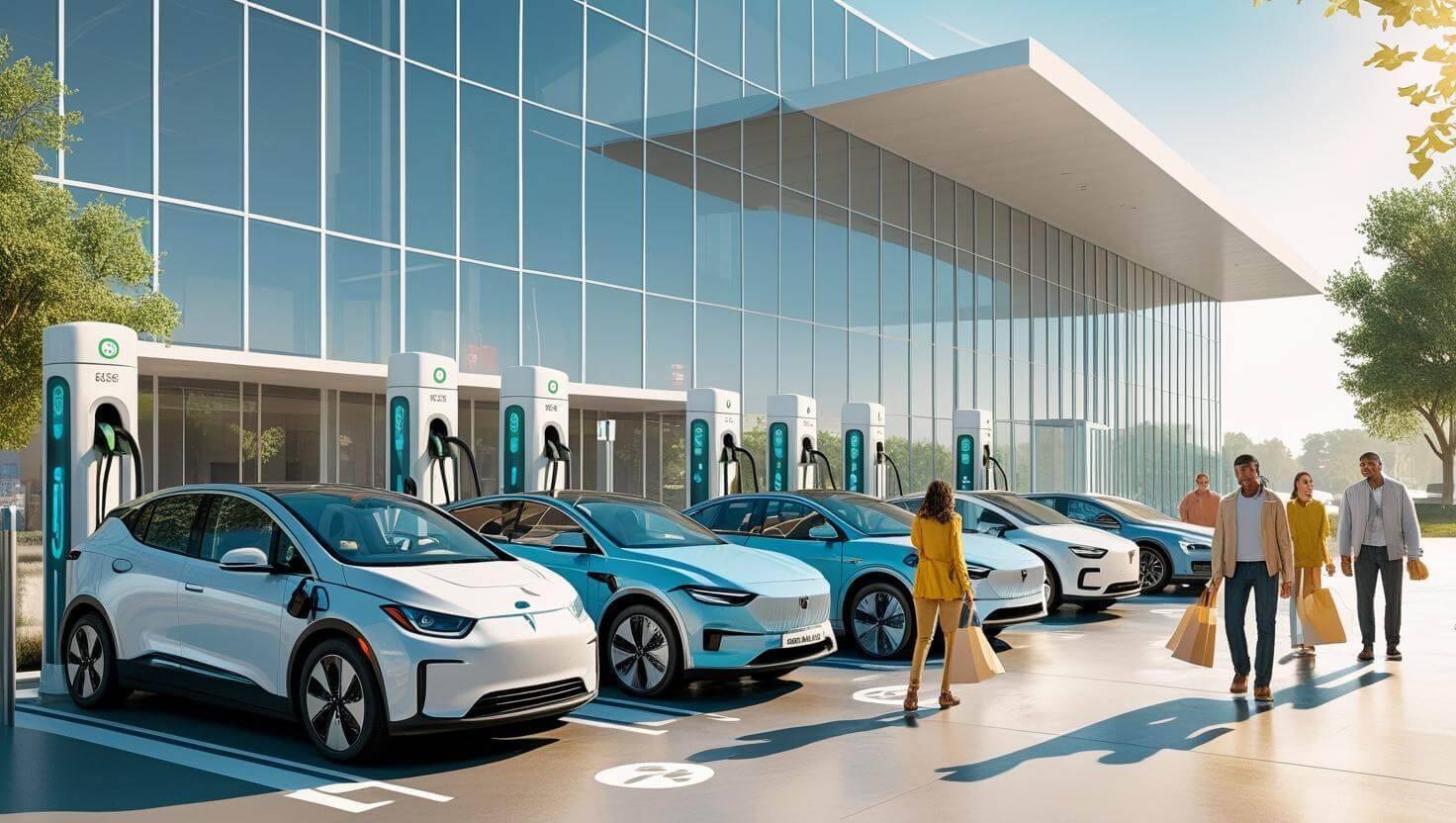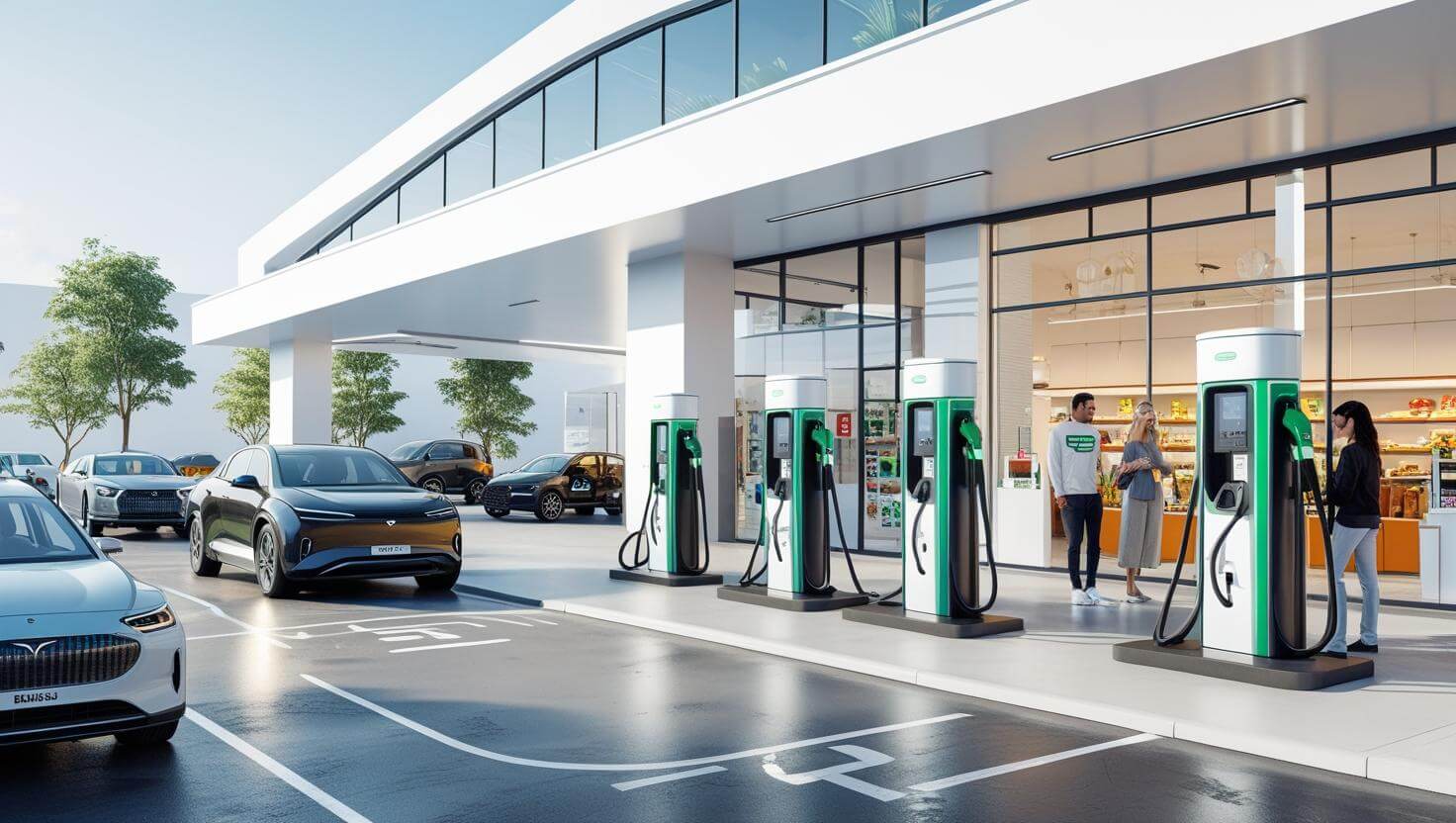Retailers entering fuel business isn’t just a trend—it’s a retail revolution. From mega-stores like Walmart to local grocers, big and small names are diving into fuel, blending it with tech, service, and convenience like never before. This shift isn’t about selling gas—it’s about reshaping the everyday pit stop. With fuel station trends evolving fast and EV charging stations becoming more common, traditional stations are turning into high-tech, multi-use destinations.
This bold new era is powered by fuel retail innovation, smarter operations, and seamless digital transformation in retail. As convenience store services expand, customers now expect more than fuel—they want an experience. Let’s examine the causes and future directions of this development.
Where Are We Now?
In 2025, the U.S. fuel market is more competitive than ever. Traditional fuel companies are now competing with large retailers. These businesses are turning gas stations into digital retail ecosystems with on-the-go services and hyperlocal retail options. Many have started to see fuel stops as full retail customer experience zones, not just pump-and-go places.
There are over 150,000 convenience stores in the U.S., according to NACS. About 80% of them sell fuel. But they are doing more. Many are focused on trip consolidation, giving customers a way to eat, shop, and fuel up all at once. This is not just a trend—it’s the future.
The Shift in Retail: Retailers Entering Fuel Business
Retailers entering fuel business is a smart move. Many stores already have the customer base, the space, and the tech to support fuel and alternative fuel solutions. The key reason? Profits. Fuel may be low-margin, but it brings people in. Once inside, consumer engagement with high-margin items like snacks and drinks drives profits up.
Also, retailers inflation pressures make diversification more important. Selling fuel and offering non-fuel revenue streams through services like cafes, parcel pickups, or small banks makes the retail model more sustainable. They also use location-based promotions to bring in local shoppers.
Comprehending Gas Prices: How Do Canadian Gas Prices Operate?
While U.S. gas prices are set by global oil markets, Canada uses a mix of taxes and local refining costs. This makes Canadian fuel sometimes more expensive than in the U.S. Still, studying how do gas prices in Canada work helps us understand future fuel pricing models.
Retailers can look at Canada’s focus on sustainability in retail and carbon taxes as a sign of what might come in the U.S. These pricing models will shape how retail fueling is priced and offered. Retailers can prepare by investing in fuel station modernization and EV infrastructure investment.
Declining Fuel Demand and the Rise of Alternative Mobility
We can’t ignore it. Fuel demand is falling. Electric vehicle market growth is picking up speed. Car makers and fleets are switching to EVs fast. As a result, gas sales are slowing, and more stations are closing or adapting.
Retailers entering this space see a chance. They can lead in alternative fuel solutions, like hydrogen or electric. With more digital transformation in retail, adding charging stations and in-store technology makes them ready for tomorrow’s driver.
Competing in Convenience: A New Battleground
This is not just about fuel. It’s about convenience shopping. Today’s customer wants fast, easy, and local. Retailers are stepping up, offering fresh food, Amazon lockers, or even mini health clinics at fuel stations.
What wins is experience. Stores that offer clean restrooms, fast checkouts, and self-service kiosks are ahead. Brands that focus on retail customer insights and use data-driven marketing will stay competitive.
Charging Ahead: How Retailers Are Adapting to EV Infrastructure
EV infrastructure investment is critical. Big players like Target and Walmart are installing chargers at locations nationwide. This is not just service—it’s strategy. It brings in new, loyal customers.
These electric vehicles users often stay longer while charging. That opens doors for more spending. Offering food, Wi-Fi, or personalized promotions during that wait makes every visit more valuable. It’s a win-win.

Fuel Retail Innovation: Tech-Driven Experiences
New tech is changing everything. From real-time customer data to contactless payments, the modern fuel stop is smarter than ever. Retailers use retail digitization to understand habits and improve each visit.
For example, the Upside app benefits both retailers and customers by giving cashback and deals in a seamless way. This is the kind of operational efficiency that makes today’s fuel stops work better than ever. For more updates on how technology is shaping modern industries, visit Gotechanic’s latest tech and business insights.
Has Consumption at Big Retailers Decreased? What the Numbers Show
Some data shows that sales at big retailers have dipped slightly. This is due to changing habits, inflation, and e-commerce. But with fuel services added, many of these brands are seeing more traffic again.
Retailers entering fuel business can offset losses. Let’s look at this table:
| Year | Big Box Retailer Sales Growth | Fuel-Integrated Locations Growth |
| 2021 | -1.5% | +3.2% |
| 2023 | -0.8% | +5.1% |
| 2025 | +0.2% | +6.7% |
Adding fuel and digital retail ecosystems leads to gains in foot traffic and sales. These numbers speak clearly.
How Retailers Entering Fuel Business Can Win
Winning in this space takes bold steps. Retailers must embrace customer behavior analytics, invest in retail automation, and keep up with retail digitization. Only then can they truly compete.
They must also create memorable experiences. From clean spaces to friendly staff and tech-friendly checkouts, the full journey matters. Brands that use retail loyalty programs and offer smart, local, fast solutions will thrive.
Conclusion: Fuel Retail Isn’t Dead—It’s Evolving
Fuel is not fading. It’s transforming. The age of retailers entering fuel business has begun, and it’s here to stay. With a mix of tech, service, and mobility, the future is full of promise.
Those who adapt—who use real-time customer data, launch self-service kiosks, and offer on-the-go services—will lead. The road ahead is digital, smart, and fast. Get ready, because fuel retail is not what it used to be. It’s better.
FAQs:
- How are big retailers changing the gas station model?
They’re turning fuel stops into multi-service hubs with fresh food, EV charging, and tech-driven convenience to attract more customers. - What are the most recent developments in the sale of fuel?
Key trends include fuel station modernization, mobile payment solutions, and the integration of retail tech solutions for better service. - How are fuel sellers being impacted by the growing popularity of electric vehicles?
As electric vehicles grow, retailers are investing in EV infrastructure and reducing dependency on traditional fuel sales. - What role does convenience shopping play in fuel retail growth?
Convenience shopping drives higher in-store sales, with shoppers expecting fast access to food, essentials, and on-the-go services. - Are traditional gas stations losing customers to retail chains?
Yes, traditional stations face stiff competition from hyperlocal retail players offering better consumer engagement and more modern services.


